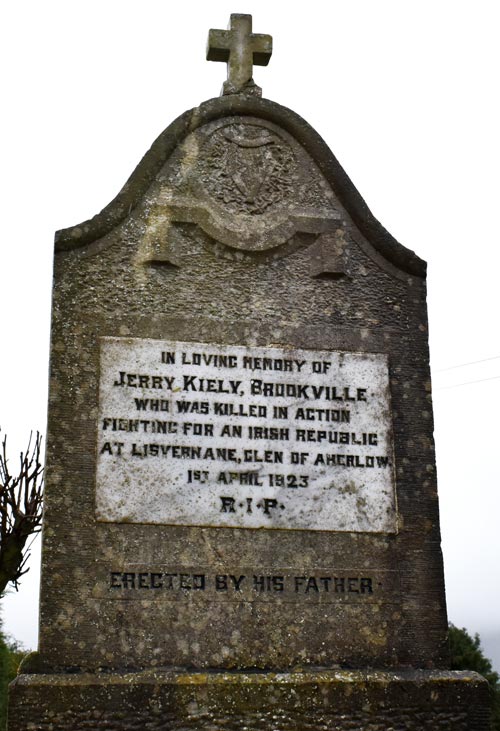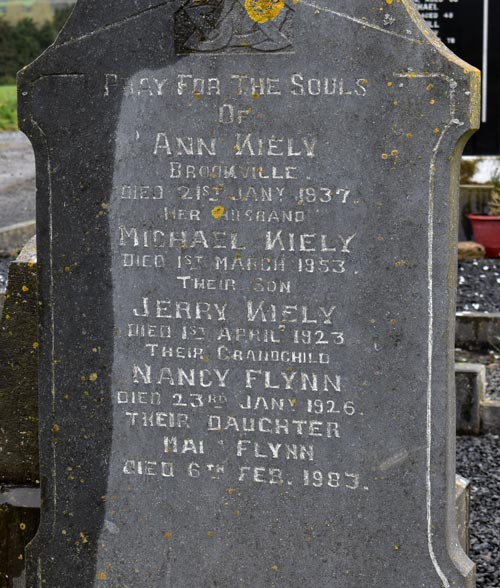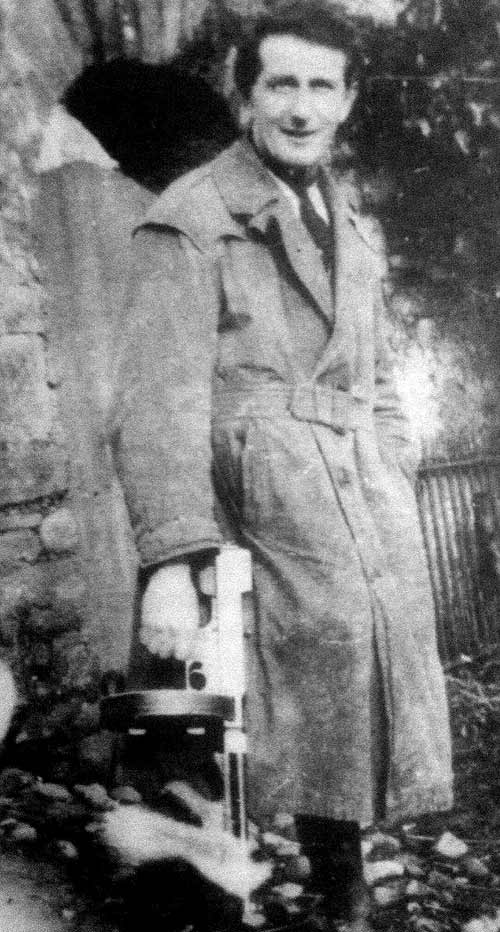
Picture courtesy G. Willoughby.
The Centenary Commemoration for Captain Jerry Kiely, 4th Battalion, 3rd Tipperary Brigade IRA, will take place today, Saturday April 1st, at 3:30pm, in Lisvernane Village, Glen of Aherlow, Co. Tipperary.
The Commemoration is being held in conjunction with the Third Tipperary Brigade Old IRA Commemoration Committee.
Capt. Jerry Kiely 4th Battalion 3rd Tipperary Brigade IRA.
In a statement witnessed by Dan Breen (Quartermaster, 3rd. Tipperary Bde., I.R.A) and recorded in the Bureau Of Military History, 1913-21 Document No. W.S. 1,763. Page 161 we learn:-
Following the meeting of the Army Executive in the Nire Valley, it had become known to the Irish Free State authorities that the civil and military leaders of the Republic were present in the area and elaborate arrangements were made, accordingly, to encircle the mountains of South Tipperary and North and West Waterford, with the object of bringing off the most sensational coup of the civil war.
On Sunday, April 1st 1923, the 3rd Tipperary Brigade lost a fine soldier, a brave officer and a noble character by the death, in action, of Captain Jerry Kiely, of the 4th Battalion.
Jerry Kiely was staying with Dan Breen in the house of Stephen MacDonough (father of the late Vice-Comdt., Paddy MacDonagh), at Lisvernane, in the Glen of Aherlow, when a party of Free State troops, under Captain O’Dea, from Galbally, attacked the house.
The men inside were taken by surprise, but held their fire until the raiders burst in, before opening fire. The Free State commander was mortally wounded by the first shot fired from the kitchen, while one of the soldiers were wounded by the second shot.
On receiving the fatal wound Captain O’Dea rushed from the house through the front door, by which he had entered, and running round to the back collapsed on a dung-hill where he expired.
Meanwhile, Sergeant English had attempted to open fire on Captain Kiely, but his gun jammed and in leaping back under the cover of the porch, he tripped and fell.
Springing over the sergeant’s prostrate body, Capt. Kiely rushed onto the road. Having already emptied his revolver, the latter now attempted to use a Thompson submachine gun which he carried. Unfortunately for himself, it jammed after the first shot and Capt. Jerry Kiely fell dead on the roadside, shot through the lung.
It had been arranged between Dan Breen and Jerry Kiely that they should retreat through the back door, using their grenades to get clear of the enemy, but when Jerry Kiely observed that the ‘Free State’ sergeant had tripped and fallen at the door, he saw an opportunity of escaping through the front door entrance and seized upon it.

Picture courtesy G. Willoughby.
Dan Breen meantime had gotten clear through the back door, making his
escape into the woods with the help of a hand grenade.
Captain Jerry Kiely was one of the great personalities of the Third Tipperary Brigade, a man of immense courage, highly intelligent and with a great sense of humour. He was loved by children and old people wherever he stayed.
Ernest Bernard O’Malley [Latter Irish: Earnán Ó Máille; (26th May 1897 – 25th March 1957) an Irish republican and author], writing of Jerry Kiely, stated “His face was brown under thick black hair, which he carefully combed. He held his head to one side. He spoke rapidly, he was good company around a fireside. I could often hear his songs at night-time”. Kiely was a man of vision and a deep thinker, who sought military action.
He was not prepared to be a pen and pencil soldier during the War of Independence. He was known and respected by most of the leading IRA officers in Munster. Few is any of his comrade in the Third Tipperary Brigade were involved in as many engagements as Jerry, against enemy forces”.
It was later reported in the Press that Dan Breen had been wounded in the head during the fight. This report was unfounded. “I was not wounded on that night,” said Breen
many years later, “but I was badly wounded in the heart at the loss of Jerry Kiely. What a man he was: – one of the finest soldiers I have ever met, and a loving comrade”.
Despite creating a perception of a happy carefree fellow, Jerry Kiely was a man with a prepared agenda, with a knowledge of what he wished to achieve as a soldier and in private life. When the ‘Truce’ was called, he made his way to America, to further his livelihood prospects. It was the tragic Civil War that brought him back to Ireland.
Thus he was to lose his life in his beloved Aherlow glen at Lisvernane, Co. Tipperary in a shoot-out with Pro-Treaty troops.
As brave and able a soldier and as noble a patriot as County Tipperary ever produced, fell in battle on Sunday April 1st 1923, for his nation, while in the bloom of his youth.
Sadly, to the shame of the organisers and indeed Fianna Fáil; (latter founded as a Republican party on May 16th 1926, by Éamon de Valera and his supporters), I must report that 100 years on, neither the Kiely memorial plaque in Lisvernane, nor the Kiely grave site in St. Michael’s cemetery, Tipperary town, have been cleaned for this Centenary Commemoration being held today.
It is to this end I am reminded of the lines in the song “And The Band Played Waltzing Matilda.” – [Lyrics Eric Bogle].
“And the band plays Waltzing Matilda,
And the old men still answer the call,
But as year follows year, more old men disappear,
Someday no one will march there at all.”


Leave a Reply